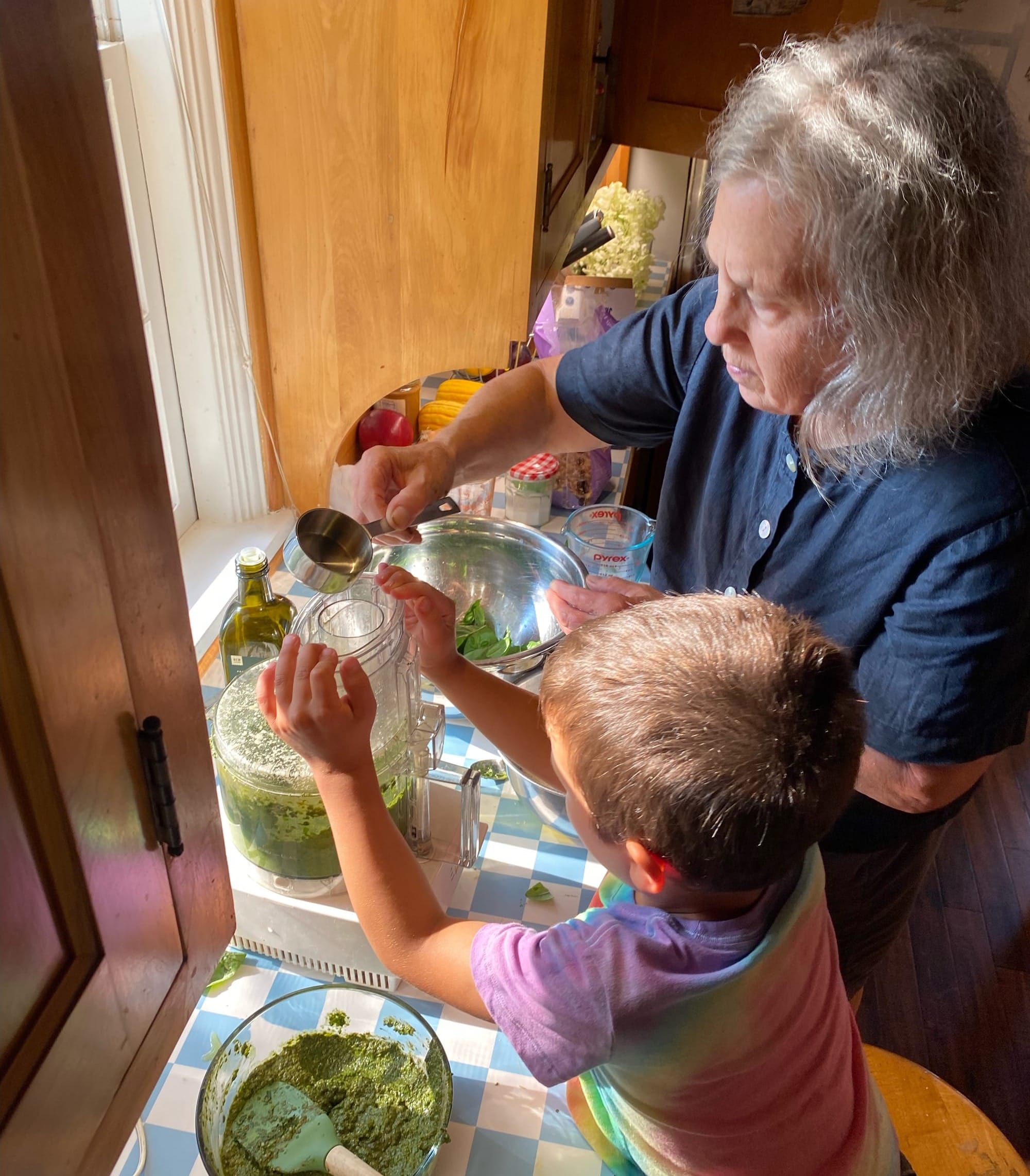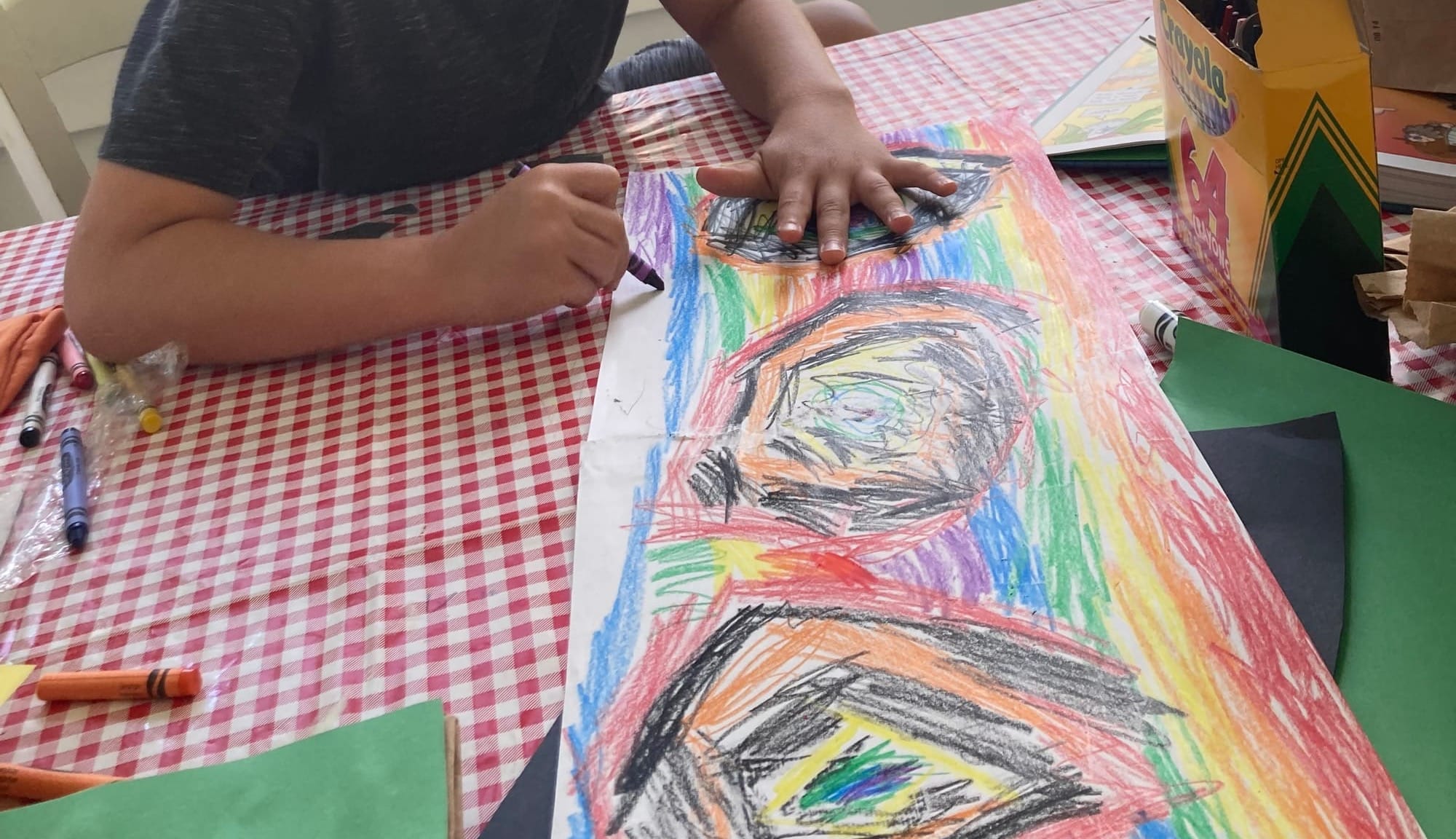Helping grandkids with projects—or not!

"Help me cut this!" says a grandchild who can use scissors. Do you help, or encourage them to do it? A grandchild's Lego vehicle would balance better with the wheels move back. Do you make a suggestion? In my experience, the default should be to hold back, and only to bring in guidance when there is good reason to.
Why? Partly, I’m looking back on my own experiences with being guided or not, and the various results. As a teenager, I hated it when my art teacher demonstrated skills by drawing or painting on my work. This technique felt intrusive, and made me resist the teaching.
Lesson one: Suggestions aren’t always welcome or necessary—particularly when they come in the form of taking over.
When it came to writing, I did finally figure out that critique helped me improve, although being able to separate my self from my writing took years of editing and being edited.
Lesson two: Suggestions can help to enhance skills (including the ability to listen to suggestions!).
When I was 9 or 10 years old, I begged my grandfather to let me use his jackknife to peel the bark off a stick and carve, like he did. He made sure that I understood the rule “always carve away from yourself.” (For any uninitiated, this rule goes a long way to avoiding self-inflicted slices and stabs when the knife slips off whatever you are carving as you put pressure on it to cut.) Once seated with my stick, outside and away from supervision, I remembered the rule but willfully carved toward my left hand, which was holding the stick. Bloody mess ensued. Fortunately, I was not very badly injured, but that was the end of using a jackknife for a while.
Lesson three: Some “interference” is necessary for safety.
Here are a few more thoughts on why and when to guide or to hold back:
Creativity
HOLD BACK: For most kid crafts, your idea about the outcome (eyes in the right place on a drawing, coloring the grass green) isn’t important—and it’s probably boring, too. The child’s results may not look much like the photos in the instructions, but the project will be full of the ideas and capacities of the kid who made it. Nurturing those is much more important than following the rules.
GUIDE: If you want to serve the cookies you are making together, you need to place some limits. The flour and sugar need to be measured properly (more or less!) and wind up in the bowl, fingers need to be kept out of the batter (until it’s time to lick the bowl, of course). Similarly with not creatively painting the walls or the dog.

Learning new skills
HOLD BACK: In medical school, a mantra is “see one [procedure], do one, teach one.” The mantra is apt for kids, too, as it attests to both the power of learning by copying and doing, and to the speed with which children (and, in theory, medical students) learn. Show a child how to use a scissors, then step back so they can learn by using a scissors.
GUIDE: My early experience with carving highlights a chief reason to intervene: the new skill is in some way dangerous. Some risk tolerance is needed around small children. Yes, they might slip and fall while mastering the kid-size climbing wall at the park. But the answer to that concern isn’t to forbid the effort or to hold onto them every second, but instead to be on careful standby until their skill is adequate. Yes, keep a three-year-old away from the stovetop, but a seven-year-old might be ready for a supervised (as opposed to micromanaged) go at frying a pancake. Another reason to guide is that the child expresses frustration, or specifically asks how to use a tool or do a task better ("how do you make it...?").

Sense of accomplishment
HOLD BACK: Completing a job or creative project according to one's own vision gives a sense of accomplishment. So if your hope for your grandchildren is that experience that satisfaction, it makes sense to allow them to do things on their own, in their own way, as much as possible. One day I tried to help a grandchild with a "rainbow snail" puppet because I didn't think his idea for stuffing it would work. But I was very glad I listened to his "no"—he was so proud of that puppet!
GUIDE: Kids do need to respect other people’s rights and preferences. When the grandkids balance on the neighbor’s rock wall, they do get a new skill and a sense of accomplishment. But if that benefit comes at the cost of stepping on the neighbor’s flowers, the neighbor and flowers take precedence.
Flipped roles
Let your grandchild help you! The trick is to figure out what part of the project the child can do, and to encourage accordingly. At 3-1/2, our grandson could help with bulk purchases at the grocery store by holding the bag for me, putting stickers on the bag for recording the PLU#, writing his own (very cute) version of the PLU# on the sticker, and sometimes, if the bin was at the right height and the item not too messy, scooping items into the bag. Older children can manage the whole process on their own. When the grandkids help me, I try to show appreciation for their assistance and kudos for their accomplishment. Hopefully, these responses will register and contribute to their growing sense of competence.